Brushless DC motor
The brushes in electric motors eventually wear out, but there is a way to deliver a powered spinning shaft without brushes. What we have below is a motor, but you have to switch the direction of the electric current every half-rotation to keep it spinning in the same direction.
As soon as you switch on these two electromagnets (left and right) they will repel the magnets on the end of the spindle (centre) and the spindle will start spinning.
START AND REPEL

The magnets will continue to spin as they are attracted to the opposite poles of the electromagnets.
ATTRACT
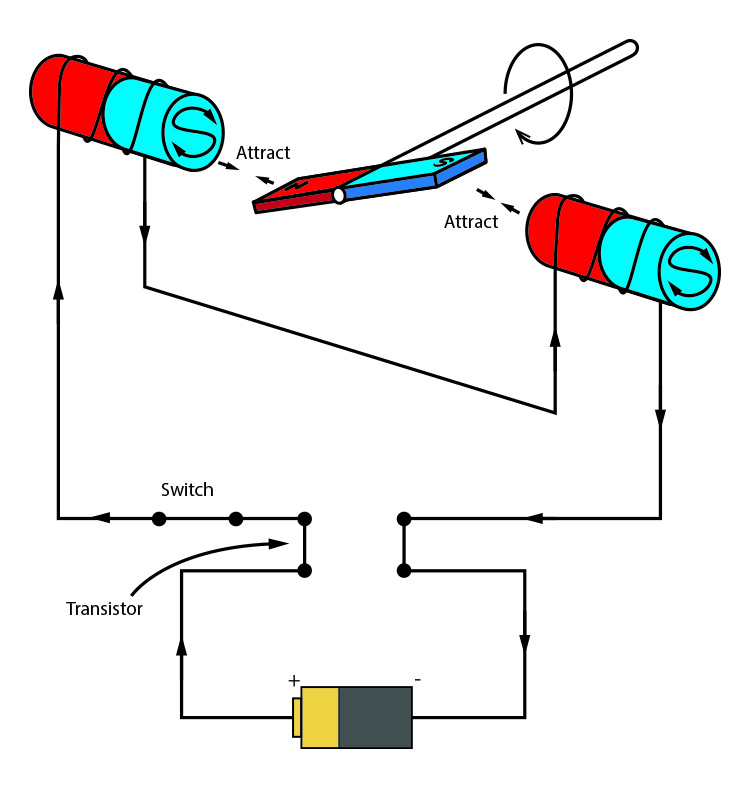
At the point where the magnets on the end of the spindle are in line with the electromagnets, the direction of the electrical current through the wires is switched to change the polarity of the electromagnets and repel the now opposing poles of the spindle magnets.
SWITCH AND REPEL
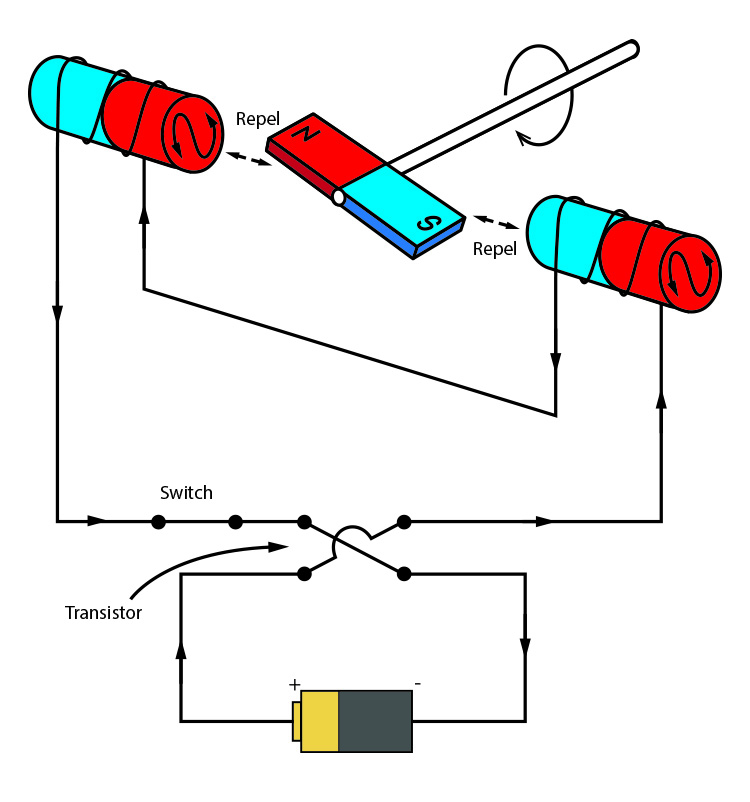
The electromagnets can again attract the approaching opposite poles of the spindle magnets.
ATTRACT
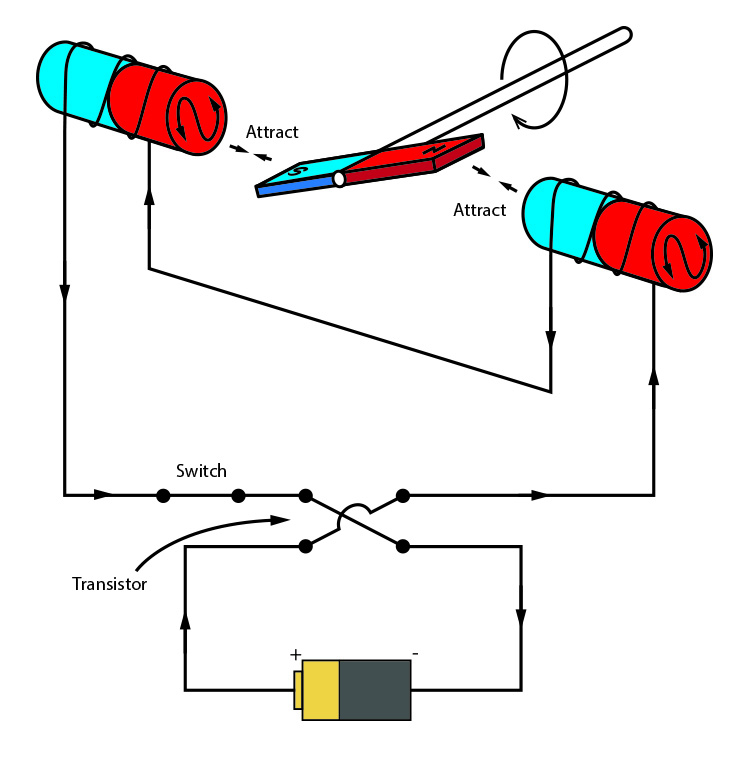
Once level, the electromagnets must again have the direction of current changed to switch direction and the whole process can start again.
SWITCH AND REPEL
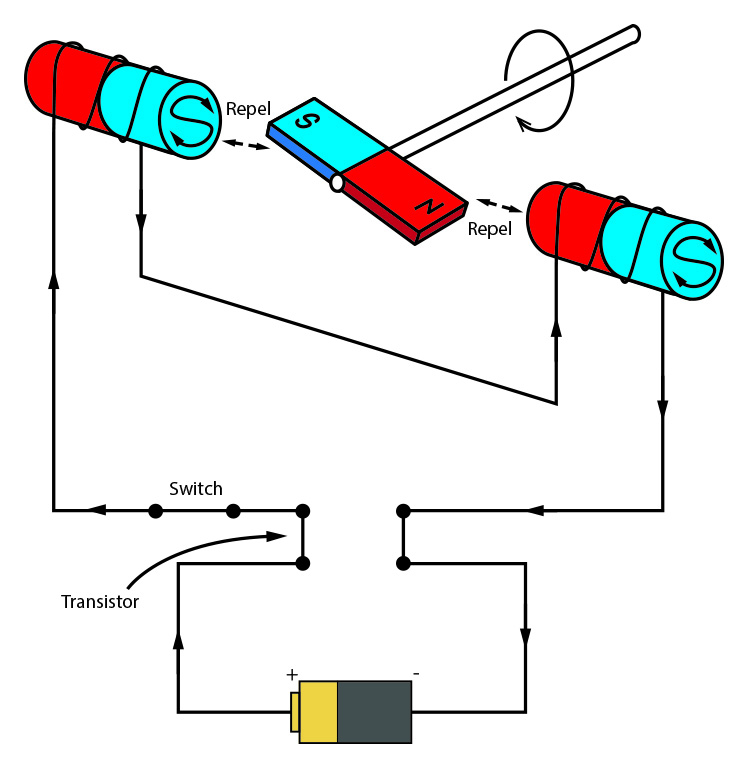
Before the advent of cheap computers and power transistors (electronic switches), it was impossible to build up the speed of the shaft.
Computers and transistors allowed accurate and fast switching to occur, so much so that even more power can be generated by switching even more electromagnets around a magnet:
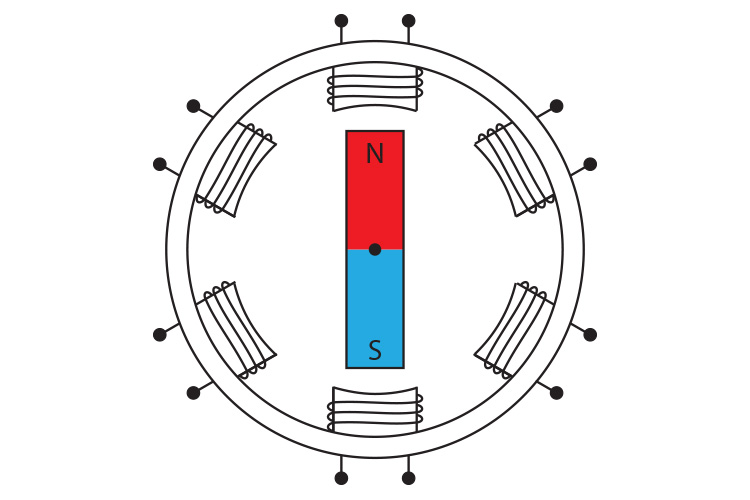
Switching accurately can make the magnet turn very powerfully.




